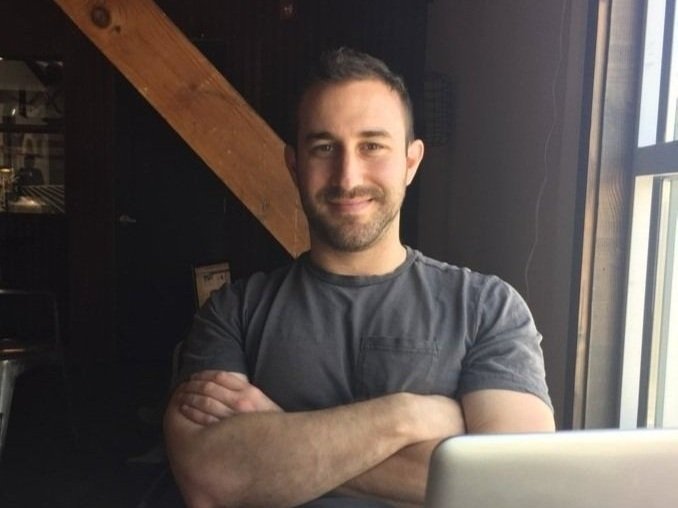How Empathy for your Future Self Improves your Consumer Behavior
On May 11th, 2011 a group of research subjects was given a simple choice: Do you want $5 now, or $500 on May 22nd, 2011?
With less than two weeks to wait, the answer seems simple: Hold off and get the $500. Easy money, right? However, the research subjects overwhelmingly chose the $5.
Why May 22nd, 2011? These particular participants were followers of Harold Camping, the self-proclaimed Doomsday Prophet. He believed, as his followers did, that The Rapture would come on May 21st, 2011. To his followers, May 22nd, 2011 may as well as be May 22nd, 3011.
Believing in the apocalypse leads people to discount their futures. It’s easy to look at this behavior as bizarre, but a wealth of research in economic decision-making reveals that this is something that each of us is naturally prone to do—even in the absence of any apocalyptic beliefs. We reliably choose immediate short-term rewards at the expense of greater long-term gains. And in the end, we sell our future selves short.
Part of this comes down to impulsivity, and the inability to resist that immediate reward. But recently, research has also revealed that there’s a social element as well. We see our future self as a distant stranger whom we care little about. How can we connect more deeply, and thus become more invested, in the happiness of our future self? And how can we guide our consumer behavior accordingly?
On Affective Forecasting and the Happiness of the Future Self
We’re notoriously bad at predicting how we’ll feel about something in the future. Consider the prospect of receiving free ice cream, every day for thirty days straight. Daniel Kahneman provided an exploration of this exact scenario, and if you’re like the volunteers in his study, you’d have a very optimistic prediction of how happy this would make you. Everyone predicted that their enjoyment of the ice cream would grow each day, and by day thirty, they would be in ice cream bliss.
To see how these predictions match up, he had volunteers eat ice cream (free of charge) every day for that month. At first, participants were understandably enthusiastic. However, their enjoyment began to wane and drift further away from how happy they thought they’d be. Halfway through, participants were begging to drop out of the study, and those who did make it to the end felt miserable. The idea of eating ice cream every day seems great. But the actual impact on our future state of happiness? Not so much.
Some of this miscalculation is because the “pleasure” of ice cream, usually a once-in-a-while treat, became predictable. Pleasure habituation is a powerful force. This also comes down to the power of anticipation, wherein wanting is far better than having something. The brain engineers pleasure only in the chase, so our desire for something in the present is always far greater than our actual enjoyment of it will be in the future.
We don’t naturally calibrate for this discrepancy, and it makes us terrible predictors of what will make us happy. Behavioral economists call the ability to predict how you will feel in the future affective forecasting, and we’re generally horrible at it.
The same appears to be true for predicting the impact of negative events as well. Dan Gilbert of Harvard University has done extensive work in this domain, which he dubs ‘impact bias’. In one set of experiments, he gathered data from people who had every reason to be unhappy: people who were stood up at the altar. At that moment, as expected, they’re devastated with sadness. And when asked, they predict that their future self will be even worse off a year later.
But how do these future selves actually feel? When recalled and asked this question, they are surprisingly happy. In fact, many report the event as being one of the best things that ever happened to them. According to Gilbert, these findings come down to the fact that once we come to accept a situation, we then begin to synthesize our own happiness—a feature that tends to be lost in our loose connection with the future self.
In a more dramatic iteration of this study, he conducted similar studies looking at people seemingly at opposite ends of the happiness spectrum: people who had just won the lottery, and people who had just suffered a major injury and would be paralyzed for the rest of their life. At the time of these major life events, their happiness levels were indeed divergent. But when tracked over time, he found that these groups were comparably happy.
While subsequent work has failed to replicate the findings in this famous lottery study (other studies have found that lottery winners are indeed happier), the general finding remains: We’re generally poor at predicting how happy we’ll be in the future, and we’re especially bad at understanding how external events will impact the happiness of our future selves. One source of this difficulty seems to come from social cognition.
How Social Cognition Influences Consumer Behavior
In the last decade, we’ve come to understand the intricate ways our brains integrate social cues to seamlessly build models of other people’s minds. Research here suggests that we employ a similar neural mechanism for thinking about our future selves as we do for thinking about other people. That is, we tend not to think about our future selves as completely different people, as opposed to older versions of ourselves. This research also indicates that the better we can represent ourselves in the future, the more long-term our thinking is.
As lead author Hal Hershfield, professor of Management at UCLA, has written, “It may not be problematic to think about our future selves as if they are other people, as long as we see them as people with whom we have a close, emotionally bonded relationship — for those are the sorts of relationships that inspire us to make sacrifices.”
Research suggests that trying to connect with future selves can lead us to make better financial decisions. Recall the FaceApp craze from 2019, which allowed users to upload a picture of themselves and see what they would look like as an old person. Ethical implications of face-based marketing aside, research has indicated the technology has an unexpected benefit: financial planning. A 2020 study found that when students were shown an artificially-aged image of themselves, it motivated them to prepare better for their long-term financial futures.
These results suggest that this visual simulation can help bridge the gap between present and future selves, leading us to be much more invested in the latter. This impacts our consumer behavior in various ways.
Final Thoughts on Connecting with Your Future Self
Empathizing with our future self is inherently difficult, but incredibly important. The process only becomes more difficult and more crucial when other people are in the equation. If connecting with your future self means investing in your own future, empathizing with future others paves the way to being invested in the maintenance of civilization.
As we’ve seen, the two are intertwined. Believing the entire world is going to end in a few weeks isn’t exactly a recipe for long-term planning. Connecting with the future, while still in the present, is key.
Simple visualization practices seem to be remarkably helpful in bridging this gap.
FaceApp may not be able to extinguish apocalyptic beliefs among doomsday preppers, but it might be a start. At the very least, if our doomsday preppers would have just visualized themselves past May 22nd they may be a few hundred bucks richer.
Photo by GoShape via UnSplash
About the author
Matt Johnson, PhD is a researcher, writer, and consumer neuroscientist focusing on the application of psychology to branding. He is the author of the best-selling consumer psychology book Blindsight, and Branding That Means Business (Economist Books, Fall 2022). Contact Matt for speaking engagements, opportunities to collaborate, or just to say hello
References for Branding’s Impact on Social Cohesion and Shared Consumer Experiences
Bai, X., Ramos, M. R., & Fiske, S. T. (2020). As diversity increases, people paradoxically perceive social groups as more similar. Proceedings of the National Academy of Sciences, 117(23), 12741-12749.
"Fresca Brand Collection Page". My Coke Rewards.
Galloway, S. (2021) Post Corona: From Crisis to Opportunity, Penguin, Kindle Edition
Hertz, N. (2021) The Lonely Century (p. 208). Crown. Kindle Edition.
Lodge, David (2004). Introduction to Pnin. Everyman's Library.
Kozol, J. (2012). Savage inequalities: Children in America's schools. Crown.
Pew Research Staff (Dec, 2020). America Middle Class is Losing Ground, Pew Research https://www.pewresearch.org/social-trends/2015/12/09/the-american-middle-class-is-losing-ground/
Rao, G. 2019. "Familiarity Does Not Breed Contempt: Generosity, Discrimination, and Diversity in Delhi Schools." American Economic Review, 109 (3): 774-809.
Restless Memories: Recollections of the Holocaust Years (Berkeley, CA: Judah L. Magnes Museum, 1979, 1986)
Richards, C. (Jan, 2021) If Bruce Springsteen’s Jeep commercial doesn’t bum you out, congrats on the purchase of your new Jeep, Jeep ‘The Middle’ | Super Bowl 2021
Schwartz, Nelson D (2019). The Velvet Rope Economy (p. 260). Knopf Doubleday Publishing Group. Kindle Edition.
Smith, J. and Zagorsky, P. (2020) Poorest Americans drink a lot more sugary drinks than the richest – which is why soda taxes could help reduce gaping health inequalities; The Conversation
Statista (2000) Number of Netflix paid subscribers worldwide from 1st quarter 2013 to 4th quarter 2020
Thomas, L. (June, 2019) A third of America’s malls will disappear by next year, says ex-department store exec, MSNBC
Urban, C. (Jan, 2019) Normal Rockwell Meets Andy Warhol, MassLive Entertainment


